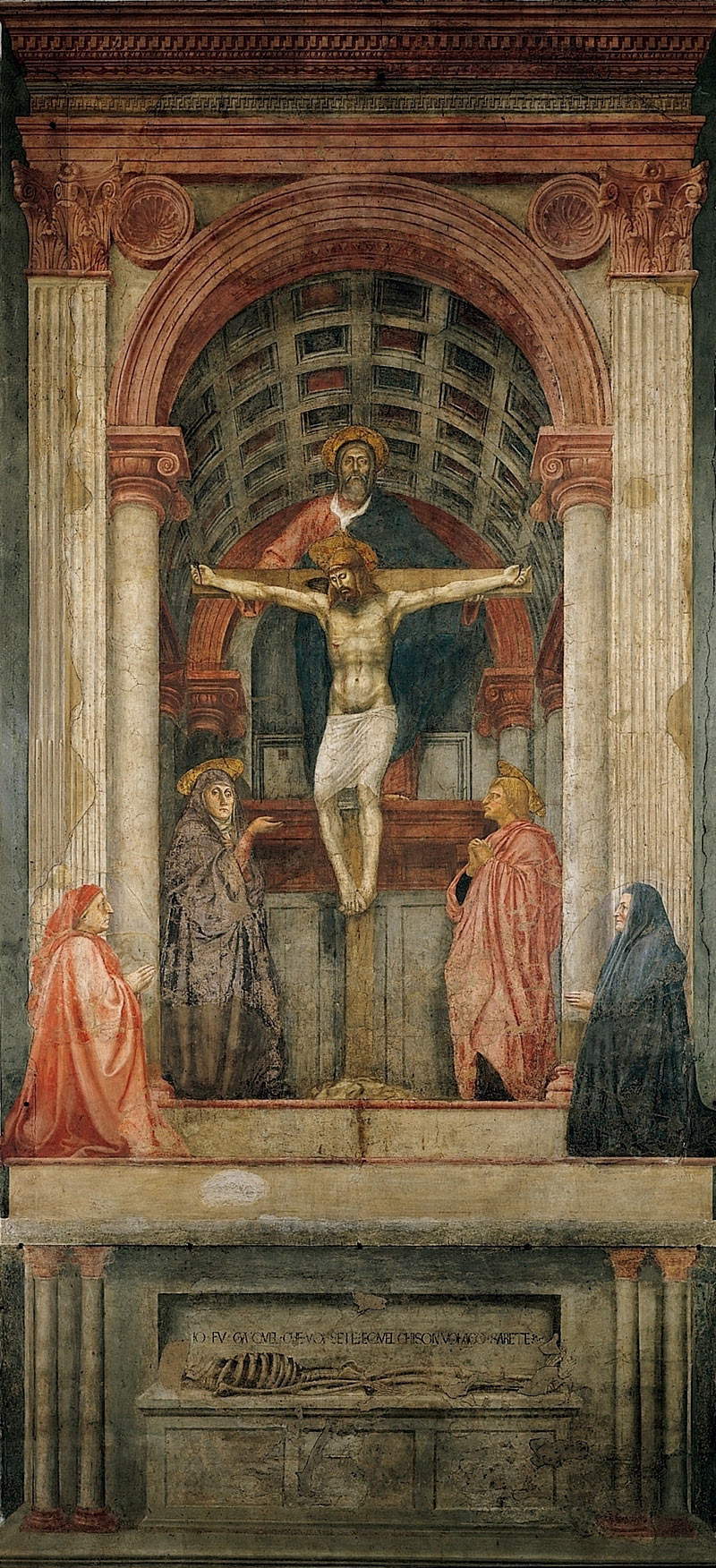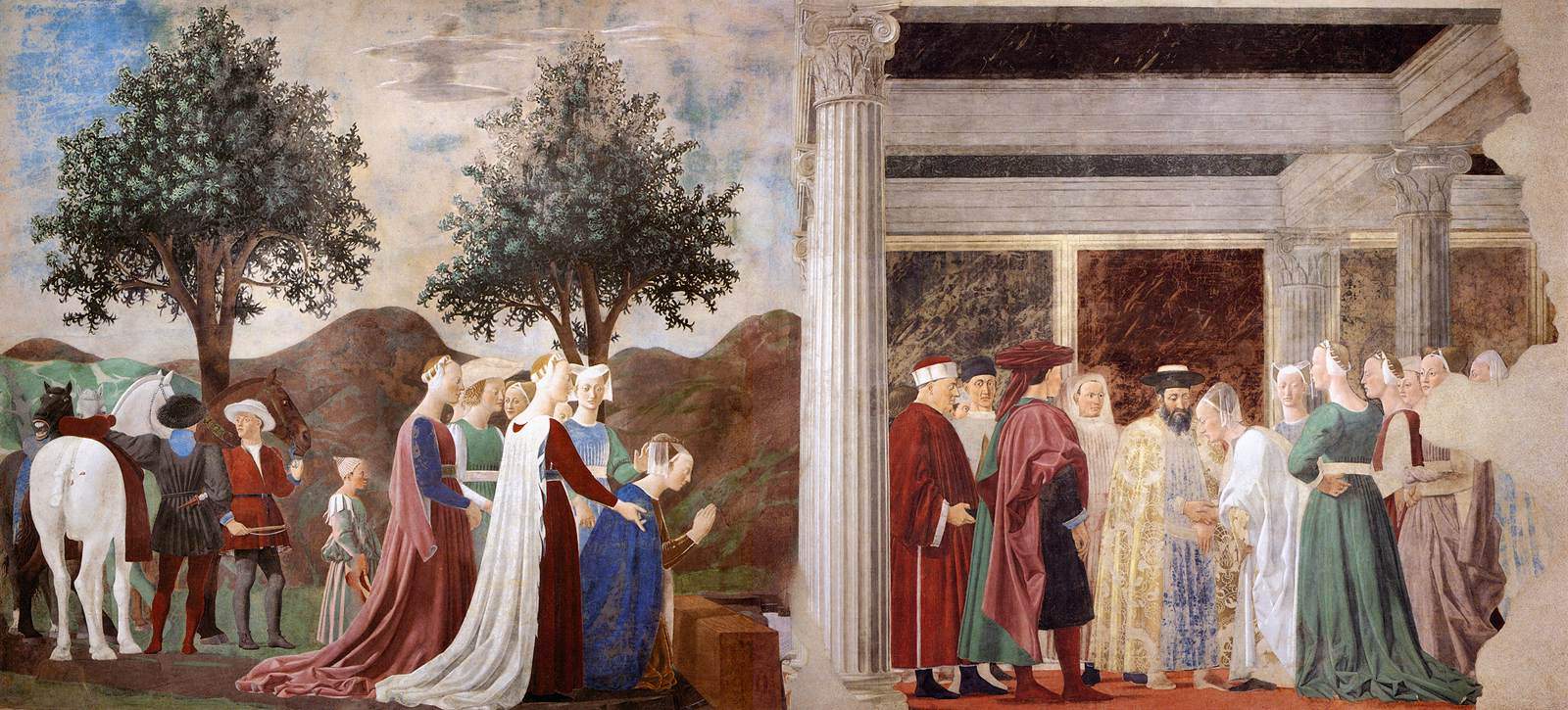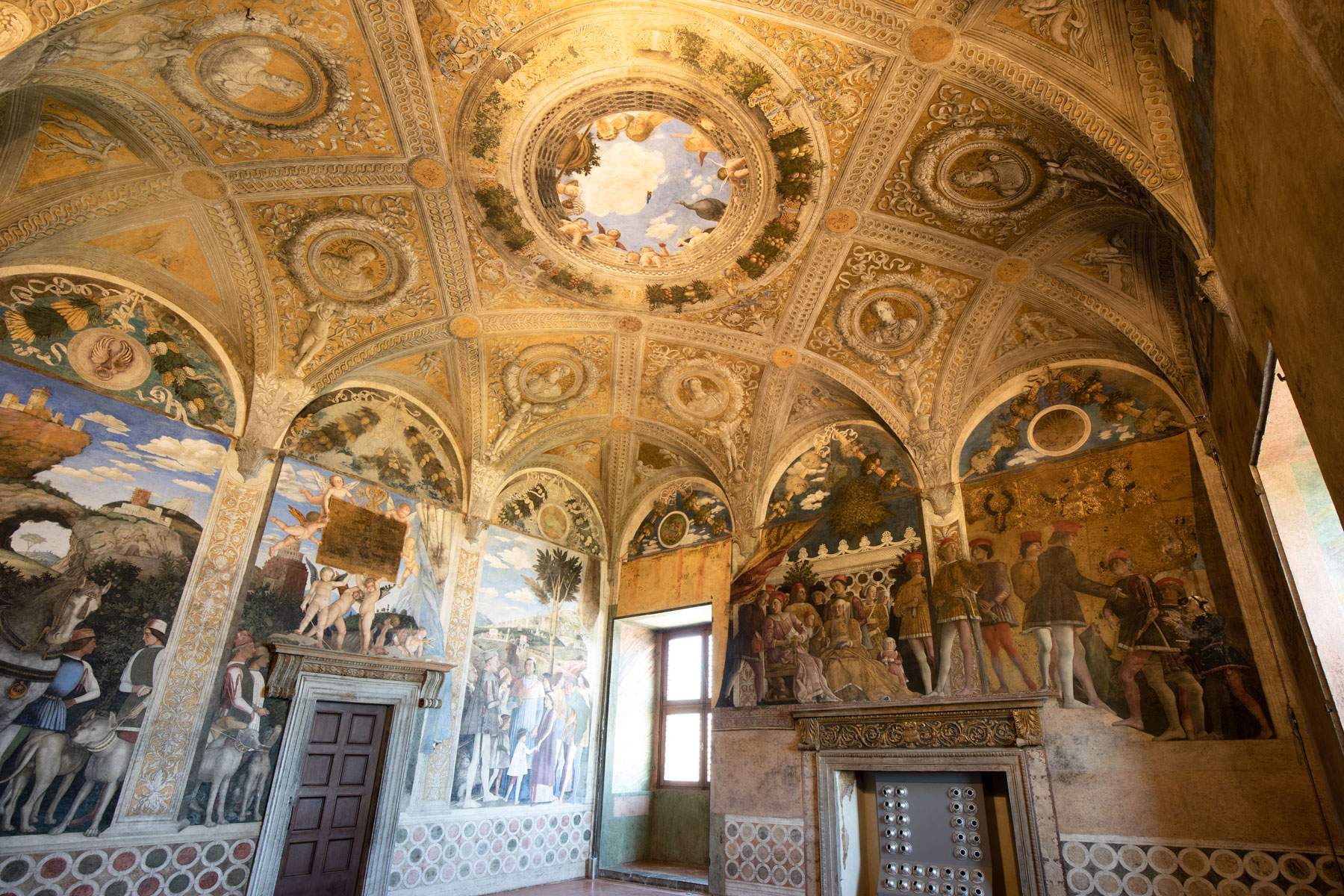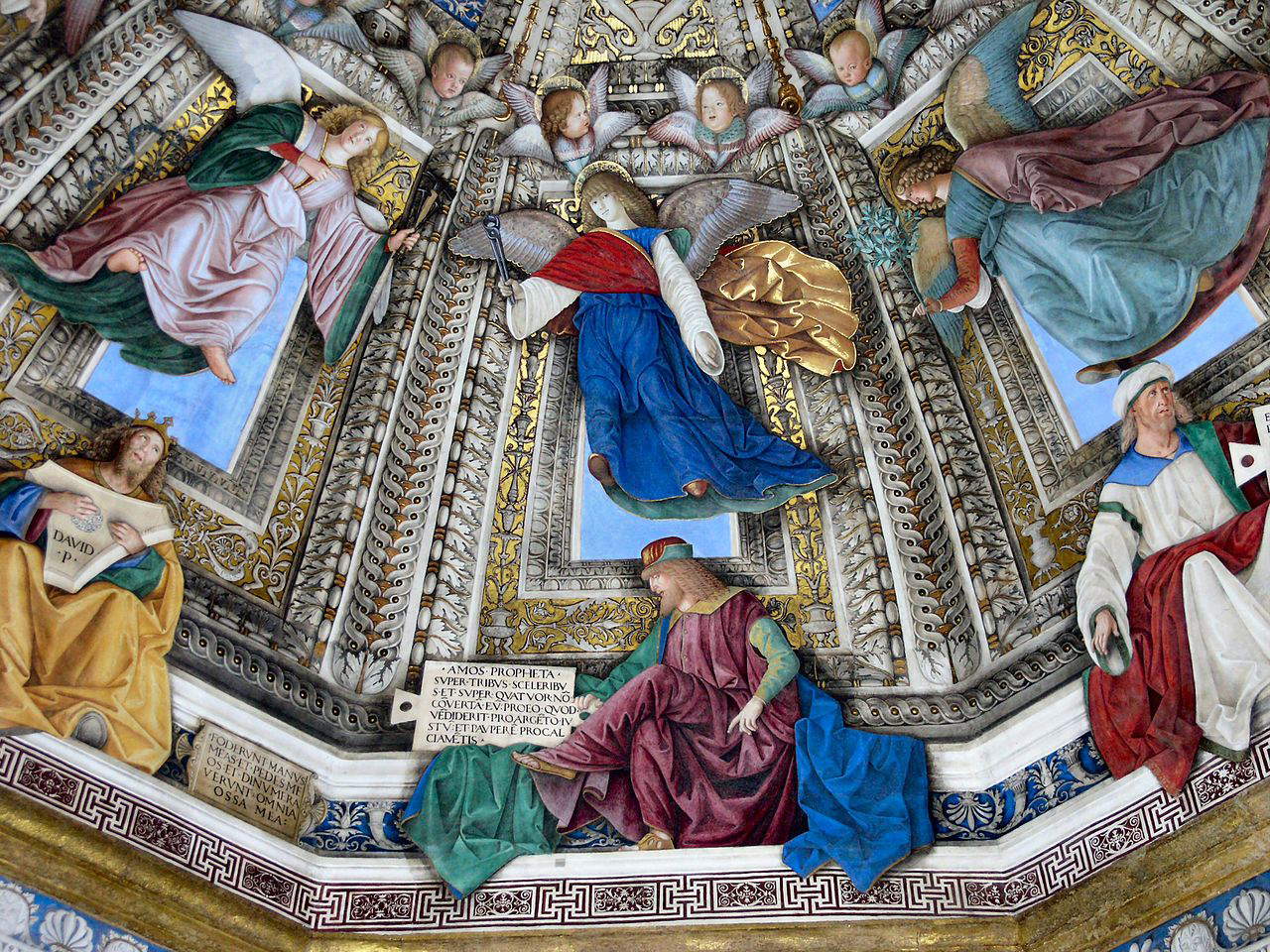With the elaboration of scientific perspective (or linear perspective) by Filippo Brunelleschi (Florence, 1377 - 1446), Renaissance art unmistakably marked its departure from International Gothic. By elaborating the canons of scientific perspective, Filippo Brunelleschi had provided the definitive answer to a problem that had characterized Western art for centuries, namely that of representing three-dimensionality on two-dimensional media. But what was perspective? It was a method of representing space: the orthogonal lines of the composition were made to converge toward a vanishing point, or “point of view,” located at the bottom of the support, and these lines served as a guide to represent objects in their depth. In short, the lines served to guide the painter in representing the elements seen in their progressive shrinking as they move away from the eye of the beholder. This had been Brunelleschi’s great insight: to understand that in order to give a truthful representation of space, it was necessary to adopt a fixed point of view.
It was therefore a scientific and mathematical method that was based on very precise rules. Ancient sources report that Filippo Brunelleschi was precisely the first artist to put these principles into practice, in two tablets (now unfortunately lost) depicting one the Baptistery of Florence and the other Piazza della Signoria. The first written formulation of Brunelleschi’s invention, however, is due to Leon Battista Alberti (Genoa, 1404 Rome, 1472), who first gave a theoretical formulation of scientific perspective in his 1436 treatise De Pictura. In addition to theoretical elaboration, Leon Battista Alberti also tried to help artists with the description of an early prospectograph, an instrument (which he called a veil) that consisted of a frame to which wires were attached to form a grid with orthogonal lines. It should be emphasized, however, that Brunelleschi’s invention is not to be considered as one that succeeds in giving a fully realistic representation of what is seen: this is because the eye’s field of vision is much wider than that presupposed by Brunelleschi’s perspective. In fact, Brunelleschi’s scientific perspective does not allow us to give a representation of what is seen from the “corner of the eye,” because the point of view is not fixed and also because the same, in binocular vision, is not unique, because our eye does not perceive straight lines, but curved lines, and because our field of vision is blurred at the edges.
Perspective, however, was an invention that gave impetus to mathematical studies in art and, above all, allowed artists to use a new tool for the representation of space, which was thus organized more realistically than had previously been done and according to precise rules. The first work, which has come down to us, in which these concepts find application is the great fresco, painted between 1425 and 1427, of the Trinity (Florence, Santa Maria Novella) by Masaccio (San Giovanni Valdarno, 1401 - Rome, 1428), the first artist to apply in painting the canons developed by Filippo Brunelleschi. After Masaccio, perspective began to be of great interest to the artists who came after him, and it became a widespread tool among Renaissance artists thanks in part to the “popularization” work conducted by Leon Battista Alberti with his De Pictura. One of the artists on whom the interest in perspective had the greatest effect was Paolo di Dono known as Paolo Uccello (Florence, 1397 - 1475), who was obsessed with perspective to such an extent that anecdotes about him were born and he went so far as to produce almost irrational works, so daring were his perspective views.
The use of perspective followed, during the Renaissance, two main lines (which, however, did not distinguish only the use of perspective in the 15th century but also characterized the following centuries): a line according to which perspective was used to give order to compositions by realizing a rational space created according to mathematical rules, and a line for which, given the potential of the instrument, illusionistic scenes were created. In the Renaissance it was the first line that prevailed but, for example, in the 17th century, great Baroque decoration was based on the illusionistic use of perspective.
Major exponent of the first trend was Piero della Francesca (Borgo San Sepolcro, c. 1412 - 1492). Piero della Francesca composed his scenes according to rigid and well-calculated geometric patterns, which also led his art to extreme results in terms of harmony, idealization and rationality, so much so that he created, in addition to compositions marked by balanced spaces, figures with impassive and imperturbable expressions, even in excited scenes (tendencies particularly evident in the Stories of the True Cross, 1452-1466, Arezzo, San Francesco). For Piero, art, even before engaging the emotions, had to engage the intellect of theviewer: this is the basis of Pierofrancesco poetics. It is no coincidence that Piero della Francesca was enormously fascinated by mathematical studies, which he applied in painting, and was himself in relationship with the leading mathematicians of the time (such as Luca Pacioli), as well as being a mathematician himself (in fact, he wrote a mathematical treatise, known as the Treatise of the Abacus). And in addition, Piero was a theorist of perspective: in fact, he collected the notions and his thoughts in the treatise De prospectiva pingendi, which is added in his treatise production to the aforementioned Treaty of the Abacus and De quinque corporibus regularibus, a treatise on geometry.



Most of the great Renaissance painters followed the line of perspective as a means of harmonious representation of space, although they never reached the rationalism and elevated geometrism of Piero della Francesca. Of an opposite character were the researches of Andrea Mantegna (Isola di Carturo, 1431 Mantua, 1506): after learning the canons of scientific perspective in Padua, where some of the Tuscan Renaissance painters worked, on the instructions of the Venetian Niccolò Pizzolo (Villaganzerla, c. 1420 Padua, 1453), who had used what he had learned from the Tuscans to create, in the Ovetari chapel of the Eremitani church in Padua, frescoes in which the painting seemed to be a continuation of the real space of the church. These researches found fulfillment in his later works, in which he improved on Niccolò Pizzolo’s results and, combining what he had learned with his study of Piero della Francesca’s art, created environments in which perspective was an expedient to give the viewer theillusion that there was something beyond the wall on which the paintings stood. This is the concept that animates Andrea Mantegna’s greatest masterpiece of perspective, namely the Camera picta, better known as the Bridal Chamber, in the Castle of San Giorgio in Mantua(read more about it here): the walls are broken through illusionistically, it seems as if one is a participant in the scenes painted on the walls, and moving one’s gaze to the ceiling and observing the very famous oculus, it really seems as if beyond the ceiling there is a blue sky and a balustrade from which cupids and court figures look out.
The other great Renaissance exponent of the " Mantegna-esque" line was Melozzo da For lì (Forlì, 1438 - 1494), who was trained by studying both the works of Piero della Francesca and those of Andrea Mantegna: he, too, made illusionistic use of perspective (as in the dome of the Sacristy of San Marco in the Shrine of the Holy House of Loreto, but he also drew on the chromatic delicacy of Fra Angelico and with his art “softened” the harshness of Andrea Mantegna’s painting, while using the same perspectival devices, and thus turning out to be one of the most delicate painters of the Renaissance.



 |
| Linear perspective of the Renaissance: what it is, which artists used it |
Warning: the translation into English of the original Italian article was created using automatic tools. We undertake to review all articles, but we do not guarantee the total absence of inaccuracies in the translation due to the program. You can find the original by clicking on the ITA button. If you find any mistake,please contact us.